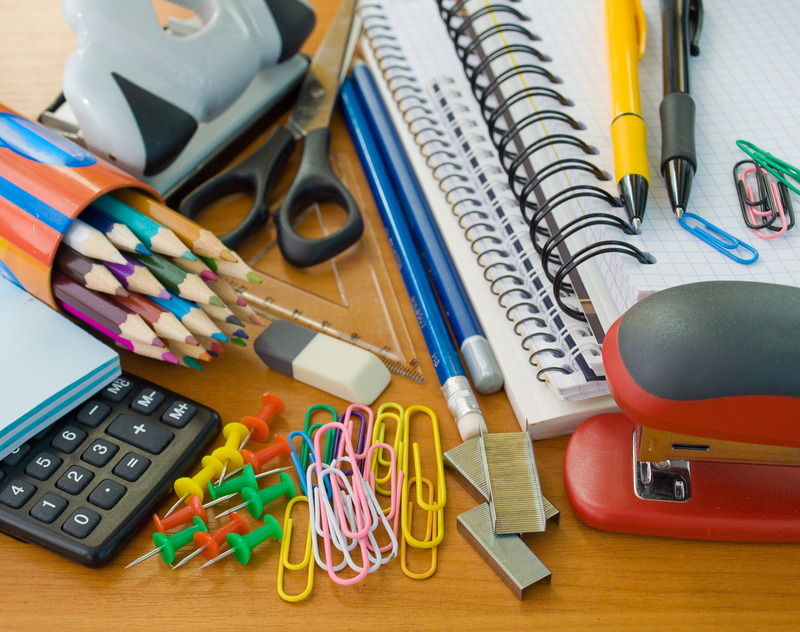Furniture Flip: Upcycle Cast-Offs into Must-Have Conversation Starters
Imagine transforming discarded, tired furniture into eye-catching pieces that tell a story while elevating your living space. Furniture flipping is more than just a trend; it's an eco-conscious movement and a creative outlet that empowers anyone to turn old, forgotten items into stylish centerpieces. Whether you're a seasoned DIY enthusiast or an eager beginner, mastering the art of upcycling can help you save money, reduce waste, and customize furniture to your unique taste.
Why Furniture Flipping is Taking Over Home Decor
In an age where sustainability meets style, more people are embracing the concept of upcycling cast-offs. The global focus on reducing waste and the increasing appreciation for bespoke interiors make flipped furniture pieces must-have conversation starters. Here's why furniture flips have become a phenomenon:
- Eco-Friendly: Upcycling diverts discarded pieces from landfills, supporting environmental sustainability.
- Customization: Personal touch means no two pieces are ever the same--each project reflects individual style and creativity.
- Cost Savings: Reinventing secondhand finds is often cheaper than buying new, especially for high-quality or vintage items.
- Storytelling: Restored vintage furniture can spark conversations, connecting households to history and character.

Finding Forgotten Treasures: Where to Source Furniture for Flipping
The starting point for any furniture flip journey is sourcing the right pieces. Even the most unassuming cast-offs can become design masterpieces with a bit of imagination. Here are top places to scout for makeover-ready furniture:
1. Thrift Stores and Flea Markets
- Local thrift stores and flea markets often have an ever-changing inventory of chairs, tables, dressers, and shelves at bargain prices.
- Look for solid wood or quality construction, as these pieces hold up best to upcycling.
2. Curbside Finds and Online Marketplaces
- Some of the best flips start with curbside cast-offs--pieces neighbors no longer want and leave out with the trash.
- Browse platforms like Craigslist, Facebook Marketplace, OfferUp, and Freecycle for free or inexpensive furniture.
3. Estate Sales and Auctions
- Estate sales are treasure troves for unique, high-quality vintage items.
- Bidding at local auctions can also yield great deals on sturdy, character-filled furniture waiting for a new lease of life.
4. Family Attics and Basements
- Ask relatives about unused furniture gathering dust. An old sideboard or chair could be your next viral project!
Essential Supplies for a Successful Furniture Upcycle
Before you start your furniture makeover, gather some essential supplies. Here's a handy checklist to keep your project on track:
- Sandpaper or Electric Sander: For removing old finishes and smoothing surfaces.
- Screwdrivers and Pliers: Essential for disassembling, tightening, or replacing hardware.
- Paint Brushes and Rollers: To apply primer, paint, or stain smoothly.
- Quality Paints, Stains, and Primers: Choose the right finish for your intended look--chalk paint for vintage appeal, latex for modern styles.
- Protective Gear: Gloves, masks, and safety glasses for a safe workspace.
- Hardware: Unique knobs, handles, or legs to add flair and functionality.
- Fabrics and Upholstery Tools: For rejuvenating upholstered items like chairs or benches.
Step-by-Step Guide: How to Flip Furniture Like a Pro
Ready to flip that dull bedside table or neglected dresser? Follow these steps for a rewarding furniture upcycle project that will stand out in any room:
1. Choose the Right Piece
- Start with simple shapes and solid construction. Avoid heavily damaged or unstable pieces unless you're confident in your repair skills.
- Consider the "bones" of the item--look for real wood over particleboard when possible.
2. Clean and Prep Thoroughly
- Remove all hardware, drawers, and doors if possible.
- Clean the entire piece with soap and water; remove grease, dust, and debris.
- Fill dents or gouges with wood filler and sand for a smooth surface.
3. Sand and Prime
- Sanding ensures old finishes won't interfere with paint or stain adhesion.
- For painted projects, use a good bonding primer to guarantee a flawless result.
4. Personalize with Paint, Stain, or Decoupage
- Experiment with bold colors, patterns, or textures.
- Try techniques like distressing, color blocking, or layering for one-of-a-kind effects.
- For a creative twist, use wallpaper, stenciling, or decoupage for added personality.
5. Update Hardware and Accessories
- Swapping out old knobs and handles can instantly modernize your piece.
- Consider unique hardware (ceramic, brass, glass) for extra charm.
6. Protect the Finish
- Seal your work with a protective clear coat or wax for durability and shine.
- Allow adequate drying and curing time before using the piece.
Trending Furniture Flip Ideas to Inspire Your Next Project
Looking for creative inspiration? These furniture makeover ideas are making waves in the world of home upcycling:
- Mid-century Modern Magic: Sand and restain dressers or nightstands in walnut or teak for an iconic retro look.
- Two-Tone Tables: Paint bases in bold hues and leave the tabletops in natural wood for contrast.
- Decoupage Delight: Transform cabinet doors with vibrant wallpaper or fabric appliques.
- Upholstered Upgrades: Re-cover dining room chairs with textured velvet or bold patterns for a fresh, luxury feel.
- Chalk Painted Charm: Use chalk paint and distressing techniques to create the perfect shabby chic coffee table or bookshelf.
- Functional Conversions: Convert old doors into headboards, ladders into shelving, or dressers into bathroom vanities.
Tips and Tricks for a Successful Furniture Flip
Even seasoned DIYers encounter the occasional challenge. Here are expert tips for ensuring your upcycled furniture stands out for all the right reasons:
- Take Your Time: A rushed project yields subpar results. Allow paint and finishes to cure between coats.
- Invest in Quality Materials: The right brushes, sanding blocks, and paints make a world of difference.
- Test Techniques First: Practice stenciling, distressing, or color mixing on scrap wood before applying them to your main piece.
- Don't Be Afraid to Experiment: The beauty of flipping cast-off furniture is that it encourages creativity and boldness.
- Document Your Progress: Take "before" and "after" photos to track your improvements and inspire future projects.
Furniture Flipping for Profit: Turn Your Passion into Income
For many, furniture upcycling is not just a hobby--it's a lucrative sideline or even a full-time business. To turn your passion for flipping into extra income, consider these steps:
- Market Your Work: Use social media platforms (Instagram, Pinterest, Facebook groups) to showcase your creations and attract buyers.
- Set a Realistic Price: Factor in time, materials, and local demand. Unique, high-quality pieces command premium prices.
- Build a Brand: Develop a consistent style and stick to a niche (e.g., mid-century modern, farmhouse, boho chic).
- Network Locally: Partner with home decor shops, antique stores, or participate in maker markets for broader reach.
- Offer Customization: Some clients will pay extra for personalized finishes and details.
Common Mistakes to Avoid When Upcycling Old Furniture
As with any hands-on project, errors can happen. Sidestep these common pitfalls during your next furniture transformation:
- Skipping Prep Work: Neglecting to clean and sand properly often leads to peeling paint or uneven finishes.
- Using the Wrong Products: Not all paints, stains, or primers are suitable for every material.
- Overlooking Hardware: The fastest way to refresh a piece is with new knobs or handles--don't miss this opportunity!
- Ignoring Structural Issues: Fix wobbly legs or cracked frames before beautifying the surface.
- Not Measuring Your Space: Ensure your flipped piece will fit where you plan to use or sell it.

Environment, Community, and the Joy of Upcycling Furniture
Furniture upcycling is about more than beautiful decor. It's a practice that supports sustainability by extending the life of existing products. When you rescue and rejuvenate furniture, you:
- Reduce Landfill Waste: Every upcycled item is one less in the dump.
- Promote Green Living: Reusing local resources shrinks your carbon footprint compared to new manufacturing and shipping.
- Build Community: Swapping, gifting, and selling upcycled pieces fosters neighborliness and supports local economies.
Conclusion: Make Your Next Furniture Flip a Must-Have Conversation Starter
Upcycling cast-off furniture isn't just about saving money or making your home look great. It's a chance to unleash your creativity, support the planet, and connect with others through stories and style. The next time you spot an old dresser at a yard sale or an abandoned chair on the curb, imagine the possibilities. With the right approach, patience, and vision, you can transform aging furniture into chic, functional works of art guaranteed to spark a conversation.
Ready to start your own furniture flipping adventure? Gather your tools, find your next project, and join the growing community of upcyclers turning cast-offs into conversation pieces!